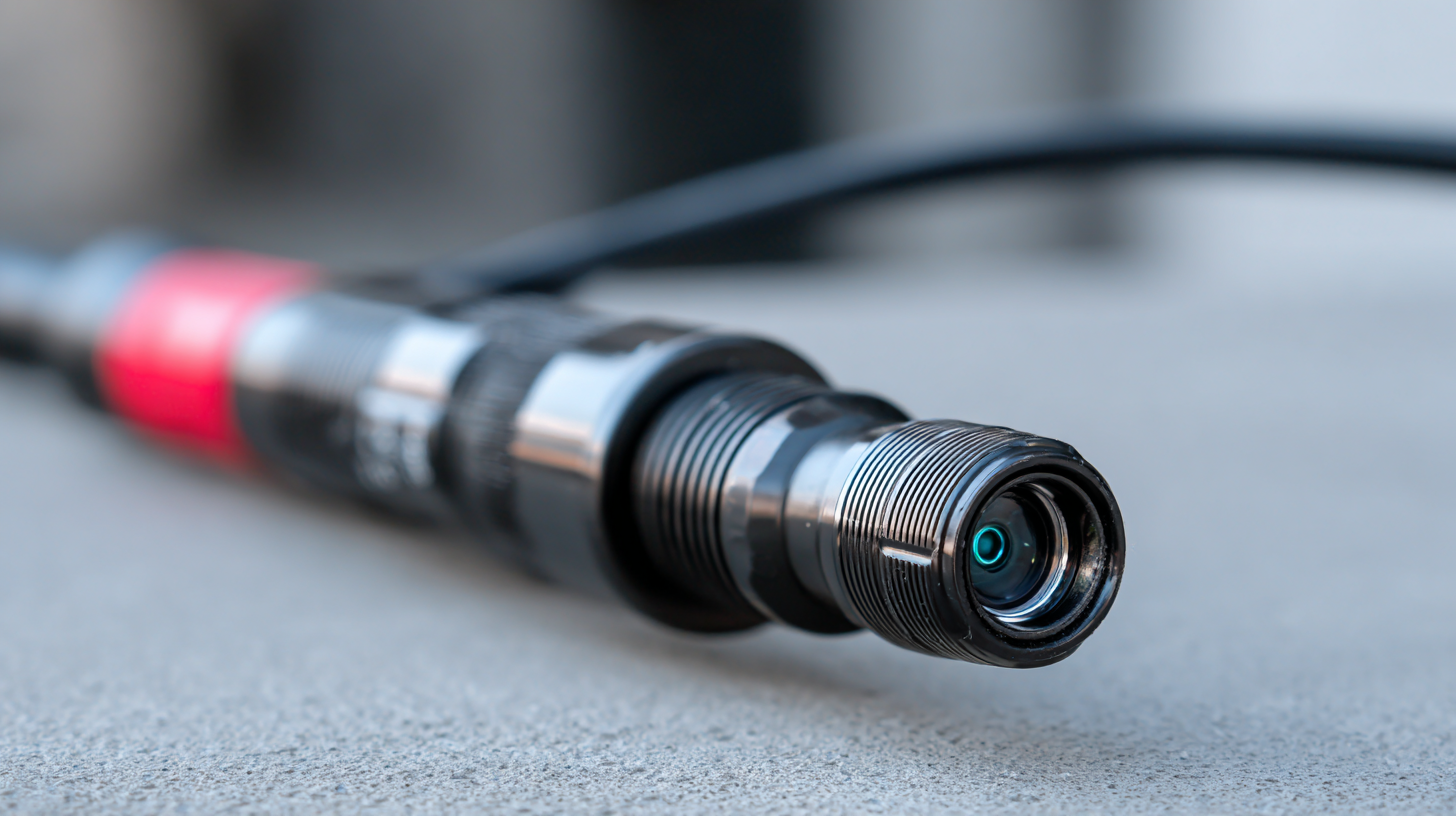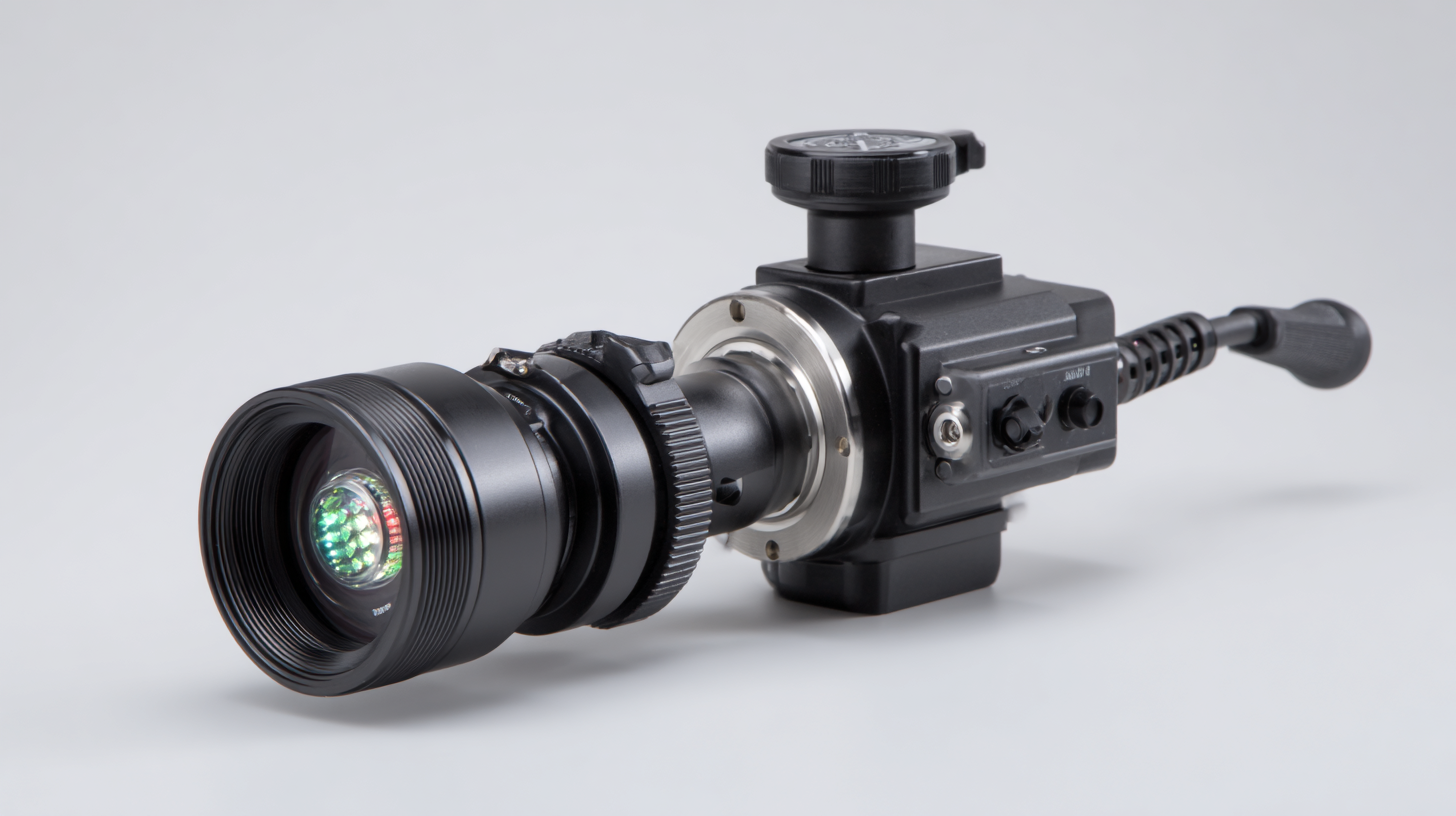Borescope vs Endoscope Understanding the Key Differences in Industrial Applications
In the realm of industrial applications, the choice between a borescope and an endoscope can significantly impact the effectiveness of inspection and maintenance procedures. Both tools serve the crucial role of providing visual access to hard-to-reach areas, but their specific designs and functionalities cater to different needs.

A borescope is typically used for inspecting narrow spaces and internal components, making it ideal for tasks such as examining engines or pipelines. On the other hand, an endoscope, often utilized in medical and industrial contexts, features more flexible capabilities suited for dynamic environments and intricate shapes.
Understanding the key differences between a borescope and an endoscope is essential for professionals looking to optimize their inspection strategies and enhance operational efficiency. In this blog, we will explore the top strategies for leveraging these tools effectively within various industrial contexts, empowering you to make informed decisions for your specific inspection challenges.
Key Features of Borescopes and Endoscopes in Industrial Use
When comparing borescopes and endoscopes in industrial applications, understanding their key features is vital for effective usage. Borescopes are primarily designed for inspecting hard-to-reach areas, making them invaluable in industries like aerospace and automotive. Recent advancements in aerospace technology have seen the production of borescope bosses using additive manufacturing, demonstrating the crucial role of borescopes in modern engineering processes. Their ability to provide clear, detailed imagery greatly aids in routine inspections and diagnostics.
On the other hand, endoscopes serve a broader range of applications, particularly in medical and industrial settings. The global endoscope market is experiencing significant growth, projected to reach USD 33.45 billion by 2030. This growth reflects the increasing reliance on endoscopes for various inspections, highlighting the importance of their versatility.
Tips for Choosing the Right Tool:
1. Assess the specific needs of your application—consider factors like accessibility, required image clarity, and the nature of the materials you're inspecting.
2. Invest in quality models based on recent testing and reviews to ensure durability and reliability during inspections, which can save time and costs in the long run.

Comparative Analysis: Borescope vs Endoscope in Inspection Tasks
In the realm of industrial inspection, the terms bore scope and endoscope are frequently encountered, yet they serve distinct purposes tailored to specific tasks. A recent report from the Borescope Inspection Market Analysis (2023) indicates that the global borescope market is projected to reach $800 million by 2028, reflecting the growing demand for non-destructive testing in sectors such as aerospace and manufacturing. Borescopes are specialized instruments designed primarily for inspecting hard-to-reach areas, particularly in internal structures of machinery and engines. Their rigid and flexible types allow for versatility, accommodating various inspection scenarios without dismantling equipment.
Conversely, the endoscope is predominantly used in medical fields but has found applications in industrial settings, particularly in areas requiring video imaging and high-definition inspection capabilities. Research by the Industrial Inspection Technology Group suggests that the endoscope market in industrial applications is expected to grow at a CAGR of 7% over the next five years. Endoscopes provide superior image quality and are often favored for inspections that demand close visual analysis, such as in the oil and gas industry where pipeline integrity is paramount. Understanding these differences is crucial for industries looking to optimize their inspection strategies, balancing the specific needs of their operations with the capabilities of each tool.
Borescope vs Endoscope: Key Differences in Industrial Applications
This chart illustrates the effective inspection depth of Borescopes and Endoscopes used in industrial applications. Borescopes provide a greater inspection depth compared to Endoscopes, making them more suitable for certain inspection tasks.
Applications of Borescopes in Manufacturing and Maintenance
When it comes to manufacturing and maintenance, borescopes play a vital role in inspecting and diagnosing hard-to-reach areas of machinery. These devices utilize flexible or rigid tubes equipped with a camera and lighting system, allowing technicians to visualize internal components without disassembling equipment. Regular inspections with a borescope can help identify wear, corrosion, and potential failures in engines, turbines, and pipelines, ultimately enhancing operational efficiency and safety.
**Tip:** To maximize the effectiveness of your borescope inspections, ensure that the lens is clean and free from obstructions before each use. This will provide clearer images and more accurate assessments of the machinery's condition.
In addition to their use in routine maintenance, borescopes are invaluable during manufacturing processes. They facilitate quality control by enabling manufacturers to examine the integrity of welds, verify the accuracy of assembly, and detect defects early in production. This proactive approach minimizes costly downtimes and improves product reliability.
**Tip:** Invest in a high-quality borescope with adjustable lighting settings and interchangeable tips to accommodate various inspection needs. Having the right tools can significantly enhance your inspection capabilities and maintain high production standards.
Borescope vs Endoscope: Understanding the Key Differences in Industrial Applications
| Feature | Borescope | Endoscope |
|---|---|---|
| Design | Rigid or semi-rigid | Flexible |
| Typical Use Cases | Inspecting engines, turbines, and tight spaces | Medical diagnostics, inspection of complex structures |
| Image Quality | High resolution, tailored for industrial applications | Variable quality, often focused on close-up imagery |
| Accessories | Various tips for different applications | Limited to specific medical uses |
| Cost | Typically lower cost for basic models | Generally higher due to advanced technology |
Versatility of Endoscopes in Medical and Industrial Fields
The versatility of endoscopes in both medical and industrial fields is a testament to their adaptability and functionality across various applications. In the medical sector, for instance, endoscopes are crucial for minimally invasive procedures, allowing physicians to diagnose and treat conditions without significant incisions. According to a report by MarketsandMarkets, the global endoscope market is projected to reach $40.2 billion by 2026, growing steadily as technology advances and improves imaging techniques. This growth highlights the need for versatile instruments capable of operating in diverse environments.

In industrial applications, endoscopes play a vital role in equipment inspection and maintenance, helping to identify potential issues in hard-to-reach areas, such as pipelines or machinery. The ability to conduct non-destructive testing has significant implications for safety and efficiency. A recent study by Grand View Research indicates that the industrial endoscope market is expected to expand at a compound annual growth rate (CAGR) of 7.8% from 2021 to 2028, reflecting increased demand for quality assurance and preventative maintenance.
Tip: When selecting an endoscope for industrial use, consider factors such as image quality, flexibility, and the availability of accessories to enhance functionality. Also, ensure the model is compliant with industry standards to guarantee safety and reliability during operations. Using the right tool can significantly minimize downtime and improve operational efficiency.
Choosing the Right Tool: When to Use a Borescope or Endoscope
When considering the right tool for inspections in various industrial applications, understanding the differences between borescopes and endoscopes is vital. While both instruments are designed to inspect hard-to-reach areas, they have specific advantages depending on the context. Borescopes are primarily used for viewing the internal components of engines, pipes, and other machinery, making them indispensable in automotive or mechanical inspections. Endoscopes, on the other hand, are favored in medical settings for examining the internal organs and cavities.
When choosing between the two, consider the intended use. For deeper inspections in mechanical contexts, a borescope's rigid structure can provide a clearer view of internal workings, especially in engines and valve systems. Conversely, for medical visualizations, an endoscope's flexibility and specialized design allow for precise navigation through complex bodily structures.
**Tips:** When using a borescope for engine inspections, ensure you have good lighting; as visibility can significantly affect image quality. It's also beneficial to choose a model with a dual camera lens for better depth perception. If you're considering an endoscope for medical purposes, prioritize one with a high-resolution camera and additional tools for comprehensive examinations. Understanding the specific features of each tool will help you make an informed decision based on your inspection needs.

